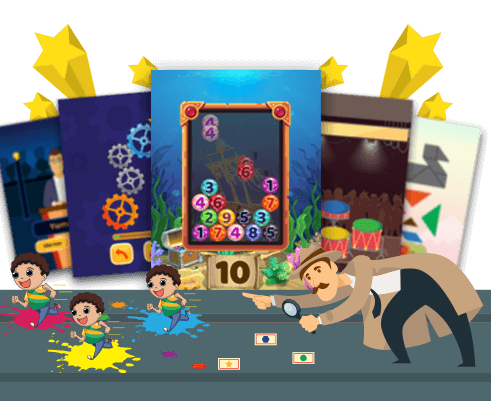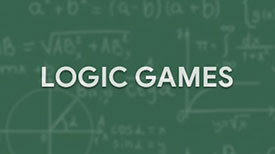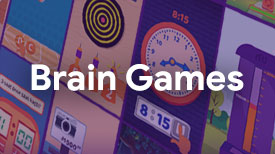40 Games That Children Can Play With Family and Friends
These few months have been the longest time that most of us had to stay home. What better option is there than to spend this time having fun with indoor games!
Whether you’re looking for new family games to play with kids, games to play with friends at home to perk up game nights, or some classic games to play at home when bored, we’ve got you covered!
Here is our list of the 40 best indoor games that you, your child, and all of your friends will enjoy! Let’s get started. 😉
Games to Play at Home When Bored
Indoor games have always been the number one preference of parents who want to help combat their children’s boredom while at home. Now, they’re needed more than ever!
Check out our wide variety of games to play at home when bored that both you and your children can enjoy and benefit from.
1. MentalUP Brain Teasers
Who said that you can’t have fun and learn at the same time? We recommend downloading one of the best apps for boredom, the MentalUP app, not only to protect children from harmful content on the internet and to help them use technology in a beneficial way, but also to help them learn and improve their skills in the most fun way possible.
This app consists of many single-player games such as learning games for toddlers or older children. Each game is pedagogically-certified and designed to improve children's mental skills. If you’d like to take a quick look at the games to play at home when bored, here are some examples from MentalUP:
Requirements
A mobile device and the MentalUP app
How to Play
Follow the given instructions for every game. When your child performs well in the games, they earn in-game gold and can spend it to develop their avatar.
Benefits
Helps developmental skills and improves the child’s attention span, memory skills, and numerical, verbal, and visual intelligence. It features 100s of brain games besides math games, alphabet games, and many more!
NOTE: 20 minutes per day on MentalUP is sufficient. You can spend the remaining time with other games that are recommended at the end of the page.
2. Maze, Find the Difference, and Similar Paper-Based Games
These kinds of games are perfect alternatives for children and parents who are looking for indoor games. They can be played by oneself so you can use them to help your children combat their boredom when you have errands to run.
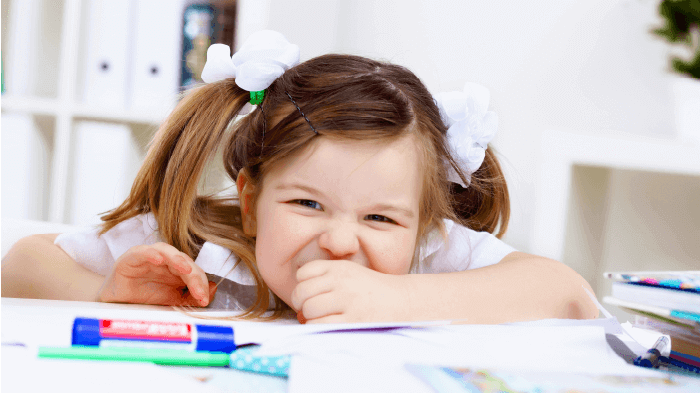
Requirements
As there are several books for these types of games, if you don't have one yet, you can print them from the internet. Better yet, print our free Maze and Find the Difference printables and get started with them!
How to Play
For the game “maze”, you have to find your way out of the maze without hitting a dead end. For “find the difference”, as the name suggests, you have to identify the differences between two or more images.
Benefits
These sorts of games support children's visual intelligence development as well as improving mental agility.
We offer many great printable resources on our Pinterest account! You can create many fun and educational activities for kids at home with them. Yes! They’re all free and waiting for you 😊
3. Racket Sports
A wide variety of games for children to play at home when bored also contains indoor games that are adapted from outdoor sports such as tennis and badminton!
Yes, we know that they are 2-player games, but you can adapt them so your children can play them against the wall or by themselves.
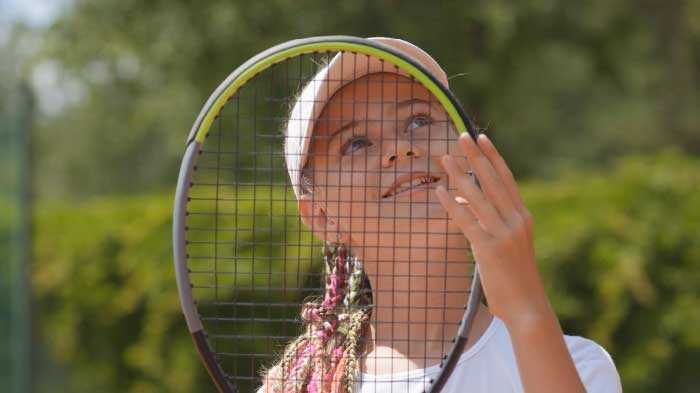
Requirements
All you need to adapt these games into indoor activities are a racket and an empty wall.
How to Play
Your children can play by throwing the ball against the wall, bouncing the ball with a paddle on the floor, or counting how many times they can bounce the ball upwards by holding their paddle horizontally.
Benefits
These activities support the development of motor skills and kinaesthetic intelligence.
4. Radica 20Q
Games that are offered to children nowadays are much more interesting and fun than the older ones 😊. Radica 20Q is one of them, being a computerized game with twenty questions that start as a test in artificial intelligence (AI). The game is based on the oral hall game known as the twenty questions.
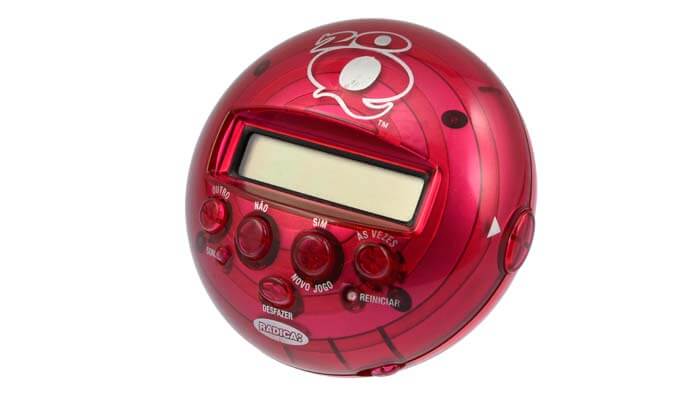
Requirements
You’ll need the gaming device Radica 20Q.
How to Play
20Q asks the player to think of something and then tries to guess what they think with twenty yes or no questions. If it cannot guess in 20 questions, it will ask 5 more questions. If the game cannot guess even after 25 questions, the player is declared the winner.
Benefits
This game helps improve problem-solving skills and strategic thinking.
5. Tangram
Tangram is an ancient Chinese puzzle that has kept its popularity for hundreds of years now. It’s one of the most fun-proven games that can be played with single-player or multiplayer. You can use Tangrams as games to play with kindergartners, elementary and middle school kids, or even teens by preferring the proper option according to kids’ age.
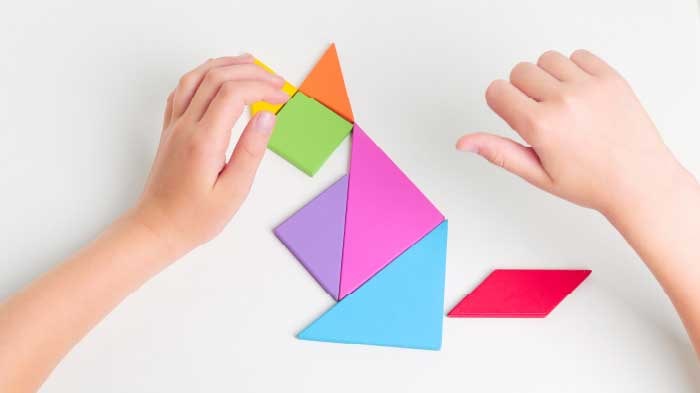
Requirements
You’ll need a piece of thick cardboard (to make the tangram shapes), a ruler, a sharp pencil, a pair of scissors (adult supervision is required), and paint & brush. Like many puzzle games today, you may prefer to playing tangram online as well.
How to Play
All tangram shapes must be used to solve each puzzle, and each tangram shape must touch at least one other shape. The tangram shapes must not overlap. By following these rules, you should put the tangram puzzle pieces together to form a shape.
Benefits
Parents widely prefer tangram puzzles because they improve children’s attention span and strategic thinking abilities while helping them understand instructions, make accurate measurements, understand geometric shapes, and work through logical steps.
🧩️ We created the best DIY Tangram Puzzle guides for parents looking for how to make their own tangram at home and an online playable free tangram game!
❱❱ Tangram Game to Play Online - Create Your Own Printable Tangram
6. Solitaire
Solitaire is a classic game and kids really enjoy it! It is also one of the most common single-player games.

Requirements
If your child wants to play Solitaires as a board game, a deck of cards is all they need. However, as there are many online and mobile versions of the game, you can also play them on mobile apps and websites.
How to Play
Cards must be distributed from a card deck to an arrangement on the desktop. The player tries to reorder the deck by suit and rank and transfers the cards from one place to another under certain restrictions. The aim of the game is to create four card-blocks from each suit ranging from ace to king, being able to get cards from the layout if they appear on the table.
Benefits
Solitaire improves children’s strategic thinking skills.
For more games in a digitally interactive environment, try MentalUP, which features dozens of games that require visual attention. Developed by doctors, game designers, and academics, MentalUP is among the best funny apps for kids and fun things to do with kids as pedagogically certified application. 🎮
7. Simon Trickster
Although Simon Trickster is not that old, it's actually been around for a while. Let’s jump right to it.

Requirements
You’ll need the Simon Trickster device.
How to Play
There are several versions of Simon Trickster, but the instructions are basically the same: Follow the flashing lights and try to keep the pattern in mind.
Benefits
This game improves memory, attention and focusing skills.
Simon Trickster is a beneficial game, however, you may have difficulties finding the device in your local stores, or simply not want to spare money on just one game.
Therefore, MentalUP created “Singing Monsters” which is very similar to Simon Trickster and is accompanied by 150+ other games that will also improve your children’s mental skills. Plus, you can play it on any mobile device so it’s easy to join our worldwide family!
8. Hula Hoop
Hula hooping has been an outdoor activity for many occasions, but it is just as fun when you play it on your own and in your living room!
It is a good challenge for kids as they can play this amazing game both inside and outside. Of course, they will need a large area to turn the circle.
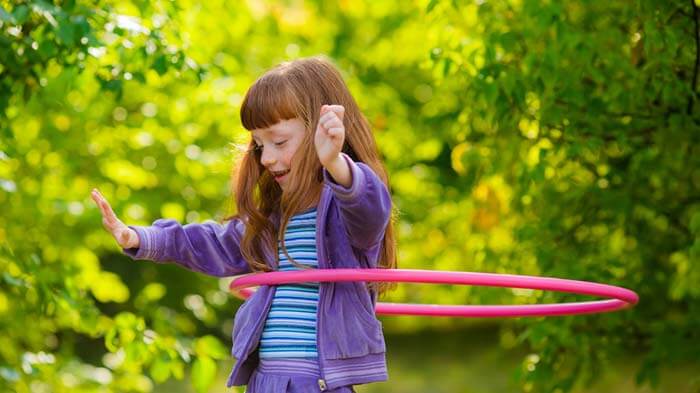
Requirements
Your child will need a hula hoop and a large area to provide mobility.
How to Play
The game is played by children turning hula hoops on various parts of their body mainly being the waist. How many turns will they be able to spin the Hula hoop without dropping it?
If your child doesn't know how to turn the hula hoop circle, it would make sense to have them watch a few videos beforehand. You can also use videos to learn new tricks.
Benefits
This exercise improves kinaesthetic intelligence and motor skills.
9. Card Matching Game
Here is another option for games to play at home when bored, the Card Matching game!
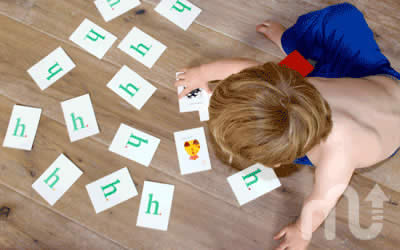
Requirements
To play this game, you can use a deck of cards, cards specifically for this game or you can make your own with the following easy steps:
- First, divide an A4-sized paper or cardboard into eight equal pieces.
- Next, draw two of the same symbol, number or patterns on each piece of paper.
- We now have four sets (eight pieces) of paper, with two of each image.
- Turn the papers upside down and mix them up. It’s time to play!
Our MentalUP games Flying Cards and Memory Cards are the digitally modified versions of the Concentration Card Matching and concentration games! Don’t forget to try them out!
How to Play
Now the game begins! The aim is to find matching pairs with the least amount of flips. You can flip maximum two cards at a time and if you can’t succeed to find a match, you’ll have to turn them back and try again.
The player will repeat this process until all the matching images are paired. As children grow older, the number of cards can be increased to further test their memory skills.
Benefits
This game is very beneficial for improving memory skills.
10. Origami
An ancient and yet creative game that is both fun and relaxing. Let your child explore how many different shapes can become out of a blank piece of paper!
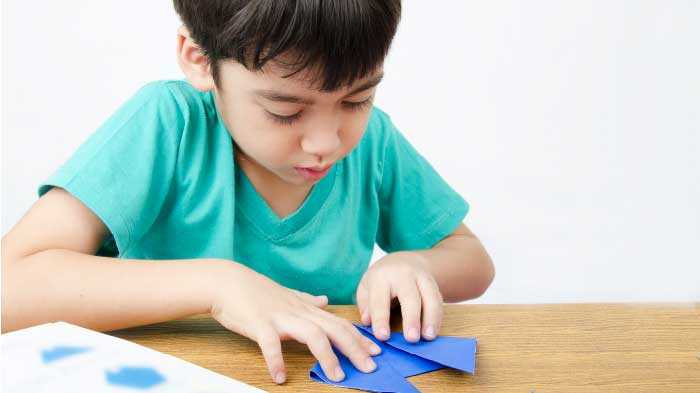
Requirements
You’ll need a blank sheet of paper and a guide for each shape. Feel free to use our printable origami guides.
How to Play
All you have to do is fold the paper according to the instructions.
Benefits
Origami helps boost attention and build proper motor skills while providing relaxation.
Learning with fun is one of the most amazing education methods in child development!
With thousands of games specially designed by academics and experts, MentalUP can help your children develop many different mental skills.
Games to Play With Friends at Home
So, it’s time for your weekly game nights and your children are willing to explore new games to play with friends at home? Try these fun options.
11. Hopscotch
Hopscotch is perhaps one of the oldest PE games. It not only helps children develop their motor skills, but also provides important daily physical activity children need.
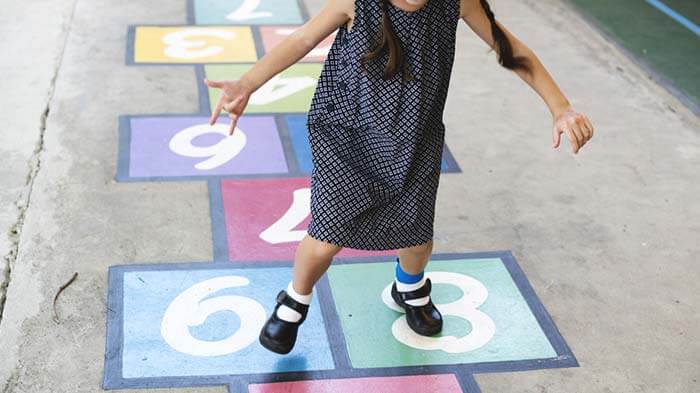
Requirements
You may prefer to play outdoors which will require a piece of chalk for you to draw hopscotch or you can use ready to use hopscotch mats. Either way, you’ll also need a stone or a stone-like object.
How to Play
It’s very simple to play:
- If you’re not using a hopscotch mat, draw a hopscotch design on the ground by using chalk.
- Throw a stone or a stone-like object to land on square one.
- Hop through the squares, skipping the one you have your marker on.
- Do not step on the lines, always keep your feet inside the appropriate square.
- When you turn back, pick up the marker stone and repeat by throwing your stone to the next square each time.
Benefits
Hopscotching improves motor skills.
12. Balloon Game
Here is a fun game that your children and their friends will enjoy very much.

Requirements
All you need for this game is a balloon.
How to Play
You inflate the balloon and start by throwing it to each other. The aim of the game is to keep the balloon in the air.
It is possible to add various rules to the game.
For example, you can make the game more difficult by saying that it will not touch any objects. Or you can set a rule where one player must throw the balloon to another player with a single throw.
Likewise, you can set a field limit for players and say, “We will stay in this field and hold the balloon in the air without touching anything”.
It can be played by two or more players.
Benefits
This game is important for the development of children's kinaesthetic intelligence, such as balance and motor skills.
MentalUP offers 150+ brain games that kids love very much! 🙌
MentalUP is also the only app that features both educational games and 240+ fitness exercises at the same time. It’s beneficial for both the mind and physics! 🤸
13. Solo Game
Solo Game is a very entertaining game that has been popular for years. Even adults can find it addictive. It will be an essential of game nights 😃
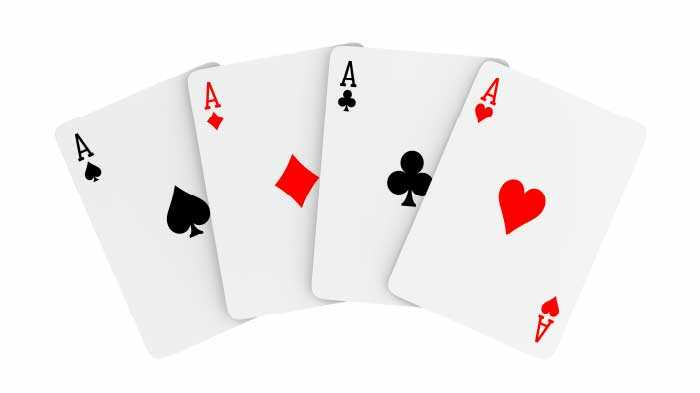
Requirements
All you need for this game is a deck of cards. Don't worry, you can find them in most toy shops at a low price.
How to Play
Solo is a simple card game where you must play every card in your hand before any other player does. Every card has a specific amount of points, and at the end of each round, the total number of points is subtracted from the total you started with at the beginning of the round unless you get rid of all your cards and thus win the round.
Benefits
The Solo game improves children’s planning and problem-solving skills.
14. Finger Wrestling
Another classic game that your children and their friends can engage in is Finger Wrestling!

Requirements
They’ll need nothing but their hands.
How to Play
Players clamp their fingers together, as in the example image. Thumbs remain in the air and wrestling begins.
It’s quite a simple and fun game! The goal in this game is to put your own thumb on the opponent's thumb.
As an alternative for multiplayer games to play with friends at home, we recommend “Rock, Paper, Scissors”.
Benefits
This game improves fine motor and reflex skills.
15. Tic-Tac-Toe
Tic-Tac-Toe is one of the most well-known games and perhaps the first pencil and card game a child learns. It is also quite simple to play.
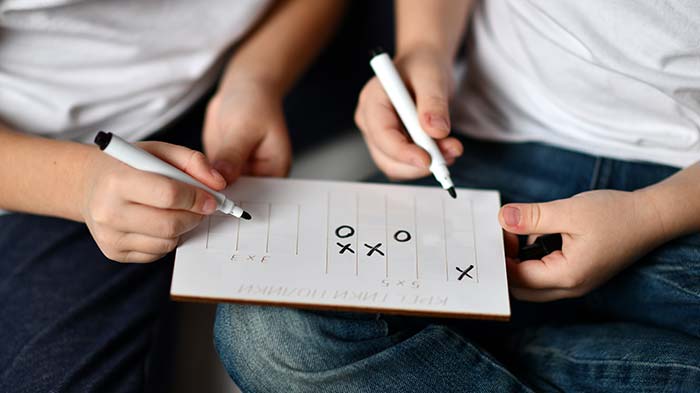
Requirements
All you need is a pencil and paper.
How to Play
Draw a grid of two horizontal lines that intersect two vertical lines. Players select a box in turn and place the letter “O” or the letter “X” to mark their boxes.
The aim of the game is to fill three marks in a row or prevent your opponent from doing it. You can also prefer to play the game on a bigger grid for more competition.
Benefits
This game improves fine motor and reflex skills.
The "Performance Tracker" feature of MentalUP, which allows parents to control the development of their children, is designed just for you, parents.
Find out what skills your child develops by playing 15 minutes of fun MentalUP mind games daily, and provide them with the right support for their academic success.
16. Indoor bowling
Think small, create great fun! Create your own bowling alley and turn a classic game into an indoor game!
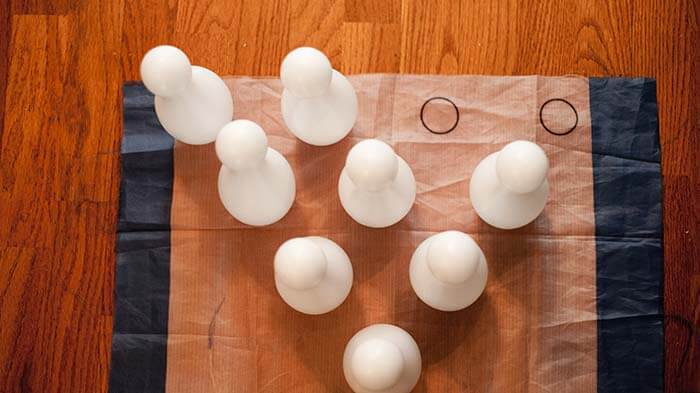
Requirements
There are plastic bowling sets for indoor activities for kids.
If you don’t own any, any ball and a few empty plastic bottles will be more than enough. Make sure that the ball is not too big so it won’t be too easy to topple the bottles.
It will also help the bottles balance better if you put a few small stones in them.
How to Play
The same rules for traditional bowling apply:
- Separate the players into two teams.
- Let the players in each team take turns to roll the ball in order to overturn the bottles!
- The first team to overturn all of the bottles wins!
Benefits
Improves focusing and gross motor skills.
17. Dots and Boxes
Here is another classic game that will bring a little competition to your children’s game night.
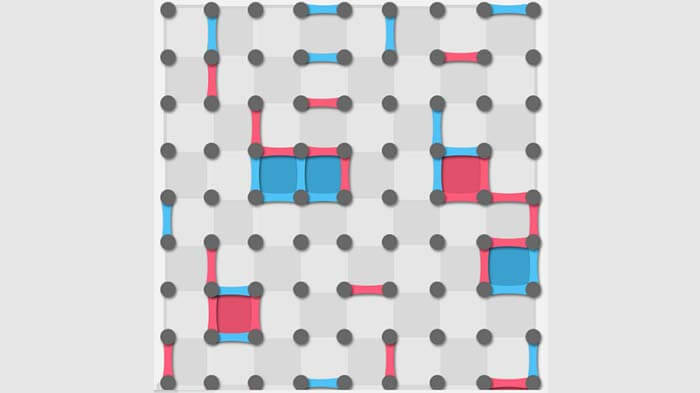
Requirements
All you need is a pencil and paper.
How to Play
Dots and Boxes begin with an empty dot grid.
- Players move in turn by adding a single horizontal or vertical line between two adjacent points in order.
- The player who completes the fourth side of the 1 × 1 box earns one more point and one more turn. Players write their initials in the boxes to indicate who has completed each.
- Dots and Boxes end when there are no more lines to be placed.
The winner is the player with the most boxes completed.
Benefits
This game will improve fine motor skills along with focusing and problem-solving skills.
18. Freeze!
Here is another classic game that will bring a little competition to your children’s game night.
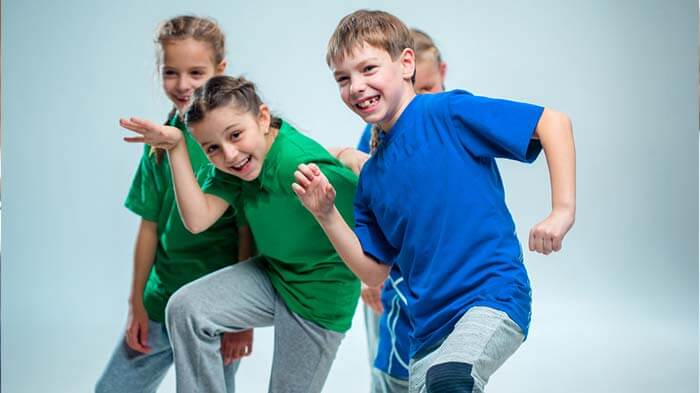
Requirements
All you need is some music and great dance moves 😁
How to Play
It’s quite easy to play. Choose your kids' favorite music and tell them to dance. Until the music stops. As soon as the music stops, the whole dance will end and everyone will freeze. Maybe a crazy dance figure, maybe just a strange mimic or a wild animal as one of the animal games for kids! The most creatively frozen person wins!
Benefits
This fun activity supports the development of creativity, gross motor skills and reflexes by improving reaction time.
19. Hide and Seek
Hide and Seek is the only game that all children love, regardless of age.

Requirements
All you need are spaces to hide.
How to Play
For your little ones, you can predetermine certain rooms or hiding places. But for older children, it will be more fun to make the game more difficult.
For instance, you can enjoy playing in the dark and outside. Give a flashlight to the player trying to find people. The last person found will be the winner and will seek the others in the next round.
Benefits
Improves strategic thinking, reflexes and motor skills.
20. SOS
SOS is another classic game similar to tic-tac-toe.
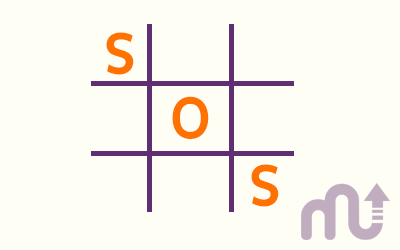
Requirements
All this game requires is a pencil and paper.
How to Play
This is a game for two people. It is played in a fixed area on a checkered notebook or a grid that you trace. Each player has a single move each time. The player can either put an “S” or an “O ” inside the frame of his choice. The player who completes the word S-O-S first wins points and new moves. The player with the most completed SOS words wins.
Benefits
Playing SOS improves strategic thinking skills.
21. Hot-Cold
Are you ready for a little hunt? Hot-Cold is one of the most adventurous ones among the games to play with friends at home!
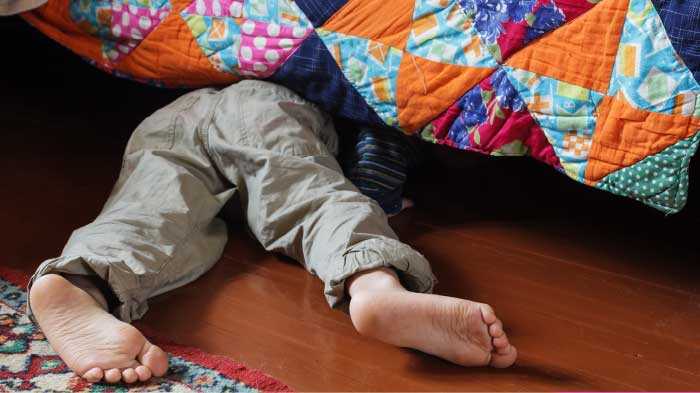
Requirements
You’ll need objects to hide and areas to hide them in.
How to Play
This is a game that is more fun to play with a group.
Inside the house, there are set boundaries like beneath beds and behind curtains, and an item is placed within these boundaries. Others will offer hints to help; as the player approaches the item they are searching for, their fellow players will say “hot”. Conversely, if the player moves away from the item, they will start saying “cold”. The player who finds the lost item as soon as possible will earn points.
Benefits
Hot-cold improves attention skills.
22. Snowman
Here is a modern approach of a classic game that will not only entertain children but also enhance their vocabulary!

Requirements
You’ll need a pencil, paper and some vocabulary 😊
How to Play
Players try to complete the spelling of a word before the drawing of a snowman is complete.
- The first player thinks of a word or phrase and writes a space for each letter. For example, if the word in their mind is “cat” they should space it as “_ _ _”.
- The other player/s guess the letters and try to spell the word.
- For the first wrong answer, the lowest (and biggest) snowball is drawn.
- For the second wrong answer, the middle snowball is added, and for the third wrong answer, a smaller snowball (the head of the snowman) is added at the top.
- After that, the snowman gets two sticks (as arms), a carrot (a nose), two eyes, and a sad face for each other mistake (total of 9 mistakes), which means that the player/s have failed to find the answer.
Tip: If you want to ease up the game a little, you can note down the wrong predictions as well so the children can have a better chance at keeping track of the game. You can also increase their chance by adding hats and buttons to the drawing, which will increase their right to make mistakes.
Benefits
Playing Snowman enhances children’s attention, memory and strategic thinking skills while improving vocabulary.
23. Yahtzee
It’s time to roll the dice! Here is another fun game for your children to enjoy!
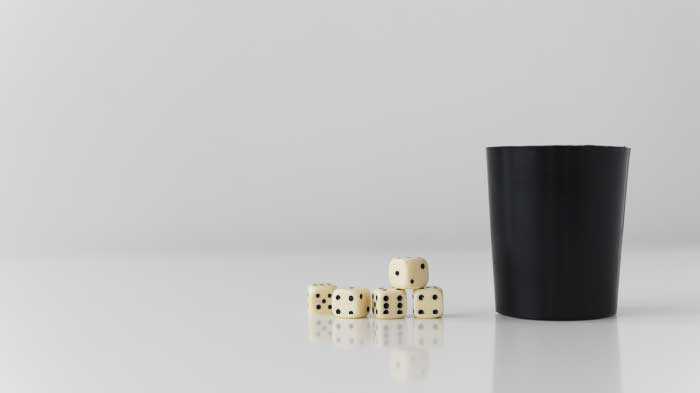
Requirements
You’ll need 5 dice, a cup to roll them, and a box.
How to Play
The object of the game is to roll five dice to make certain combinations. The dice can be rotated three times to make various scoring combinations and the dice must remain in the box. One game consists of thirteen rounds. After each round, the player chooses which scoring category to use for that round. It can’t be used again after using a category in the game. The scoring categories have varying score values, some of which are fixed values and some of them depend on the value of the dice.
Benefits
It improves math skills and boosts concentration skills.
24. Simon Says
Simons Says is another classic game that most children enjoy playing! Give it a try!

Requirements
All you need is some space to move around.
How to Play
First, a leader who will give directions is chosen. The leader will give verbal instructions while demonstrating them visually. Kids need to pay close attention to the instructions as they are to follow them only if they start with “Simon Says”.
Keep in mind that there can also be a conflict between what is said visually and what is instructed to do verbally and that you should only act when the leader says “Simon says” before the instruction.
Players fail if they perform the action without the “Simon says” phrase or if they fail to perform the action when the phrase “Simon says” is used before the instruction.
Benefits
Simon Says provides mindful listening and seeing, focus and awareness along with helping building proper motor skills.
Games to Play With Family
These games to play with family and loved ones are perfect family games for game nights!
25. Bananagrams
Here is a game similar to Scrabble, but with fewer rules so that all of your family members can enjoy them on a game night.
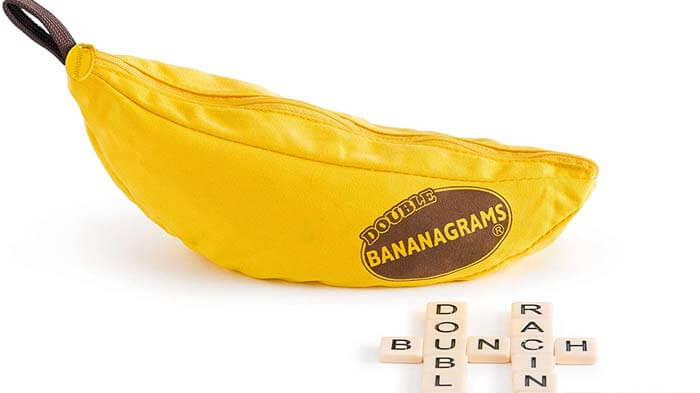
Requirements
You need the Bananagrams game set.
How to Play
The aim of the game is to create words like Scrabble. But, unlike Scrabble, even in the multiplayer version of the game, you create your own word chain without anyone stealing your space for the perfect word.
Benefits
Bananagrams improves strategic thinking and verbal skills.
26. Touchy-feely
A great game for kids who love to explore! Let’s make game nights interesting!
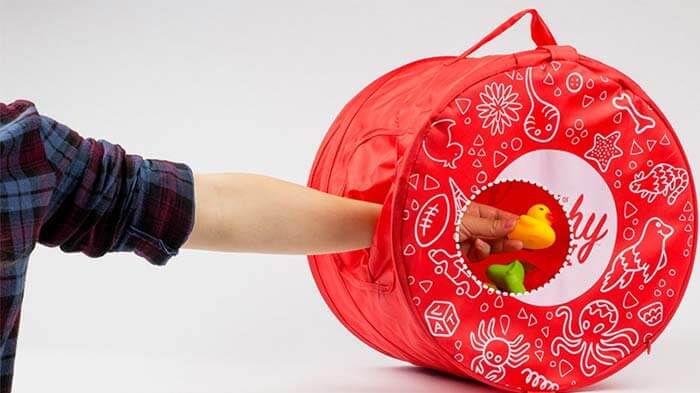
Requirements
If you don’t have the Touchy-feely set, a box and different objects to put in it will do.
How to Play
- Find a cardboard box of the size you find sufficient and make a hole on a surface that your child's hand can pass through.
- Place any fruit, toy, or another object inside the box. You can even make things a bit messier. Maybe a plate of pasta will be more fun!
- Put your child's hand in the box and ask him/her to guess the object inside. If he/she doesn't know, you win, and whenever he gives up, it's time for him!
The aim of the game is to create words like Scrabble. But, unlike Scrabble, even in the multiplayer version of the game, you create your own word chain without anyone stealing your space for the perfect word.
Benefits
This game improves fine motor skills, logic and focusing skills.
27. Jenga
Jenga is a fun classic game designed for both solo play and multiple players so it’s perfect for family game nights!
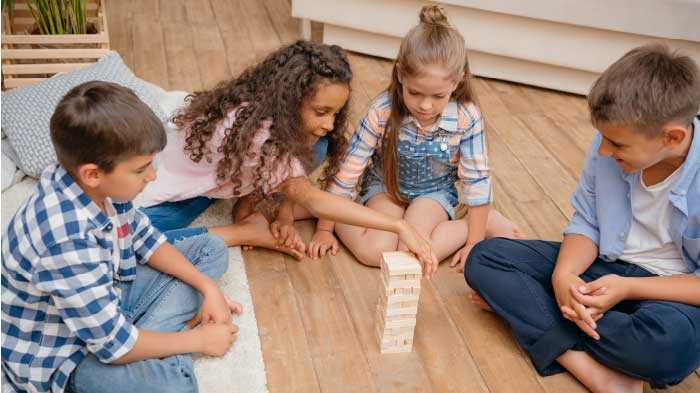
Requirements
If you don’t have the Touchy-feely set, a box and different objects to put in it will do.
How to Play
- Find a cardboard box of the size you find sufficient and make a hole on a surface that your child's hand can pass through.
- Place any fruit, toy, or another object inside the box. You can even make things a bit messier. Maybe a plate of pasta will be more fun!
- Put your child's hand in the box and ask him/her to guess the object inside. If he/she doesn't know, you win, and whenever he gives up, it's time for him!
The aim of the game is to create words like Scrabble. But, unlike Scrabble, even in the multiplayer version of the game, you create your own word chain without anyone stealing your space for the perfect word.
Benefits
This game improves fine motor skills, logic and focusing skills.
28. Guess the Sound
Let’s see who has the best listening skills! This game will not only help you improve your and your children’s listening skills but it will also shake up game nights!

Requirements
This activity requires objects that produce sound and a blindfold.
How to Play
Collect a few items that you think may produce sound. They can be a lot of things you can think of, such as several blocks of wood, paper, spoons, whistles, etc. The important thing is that the sound they make is unique.
Cover your child's eyes and make sounds using these objects. Have your child try recognizing objects by their sound.
Benefits
This activity will support the development of attention, focusing and problem-solving skills.
Do you want to prevent your child from being bored while staying at home, and also turn free time into an educational activity? Discover the fun educational world of MentalUP!
With MentalUP's specially designed educational games, you can support your child's different mental developments ranging from mathematical intelligence to attention- and visual skills as well as focus.
29. Puzzles
A puzzle is actually an activity that can be done alone, with two people and/or in a more crowded arrangement. Here’s how you can also make the puzzle-solving activity a fun and challenging game.

Requirements
You will need a puzzle set.
How to Play
Take turns in closing your eyes and choosing one of the pieces randomly. The first to find where their chosen piece belongs wins! Whoever has the most wins at the end is the overall winner!
Benefits
Improves fine motor skills, focusing skills and visual intelligence.
30. Circus Show Game
Do not assume that attention exercises consist only of brain games played on paper. The Circus Show game is an attention game that utilizes body weight. It is a very entertaining game that can be played at home by three or more people. However, as the number of people increases, the number of balls will increase, too. You may need to have four or more balls at home. 😄

Requirements
You need a ball for each person in the game (except the instructor).
How to Play
- First, three people position themselves to form a triangle. Two people hold a ball, which means one person is left empty-handed. The person who does not have the ball always issues the commands.
- The commands are “right” and “left”. For example, if the command is “right”, each person will throw the ball to the person on the right. The ball continues to be thrown to the right until the next command is received.
- The only person who can issue the next command is the one without a ball. This person can suddenly say “left”. As soon as the “left” command is received, the direction of the ball's movement turns to the left. That means, everybody starts throwing the ball to the left. Those who drop the ball or forget to throw the ball in the right direction will receive penalty points!
Benefits
Improves attention and gross motor skills.
31. The Standing Game
Get your rolling pins ready! Not for cooking dinner, but for creating fun!

Requirements
A rolling pin or a similar object is required.
How to Play
- You can play the game with a rolling pin or just a simple pole.
- First, players sit in a circle. Each player is given a nickname or a number.
- One of the players places a pole in the middle and holds it in their hand in an upright position.
- The player holding the pole says the nickname or number of another player and drops the pole.
- The named player must act quickly and catch the pole before it falls to the ground.
- If the pole falls, the player receives a penalty score. They then say another name and drop the pole.
- The game continues this way until you’re bored 😉
Benefits
This game improves children's attention skills and strengthens their reflexes.
32. Word Whiz
A paper and pencil for each player and a dictionary are required.

Requirements
A rolling pin or a similar object is required.
How to Play
- Each player gets a piece of paper and a pen.
- Players move the dictionary from hand to hand, and in turn, select a word they believe other players will not know.
- Players read the words aloud and, if necessary, spell them.
- The other players write down what they think the word means.
- All definitions are read and players choose which one they think is correct.
- The player who chose the word gets one point for each wrong guess and then shows the real definition.
- The player with the most points after a certain number of rounds wins the game.
Benefits
This game will help develop verbal, logic and attention skills.
33. Hot Potato
Hot potato is an old but never outdated game, and it’s one of the best games to play with family.
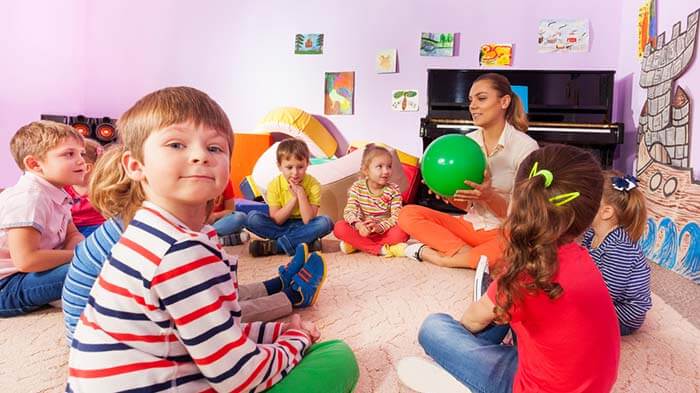
Requirements
You’ll need a ball and some music 🎵
How to Play
- Everyone sits on the floor to form a circle.
- Turn on the music while players pass the "hot potato", which is actually a small softball, as quickly as possible in the circle.
- When the music stops, the player holding the hot potato comes out.
- When only one player remains, you have the winner of the game.
Benefits
Hot Potato improves the attention span, reflexes and focusing skills.
34. Draw & Pass
Here is a family game to combine the creativity of your whole family and form a masterpiece!
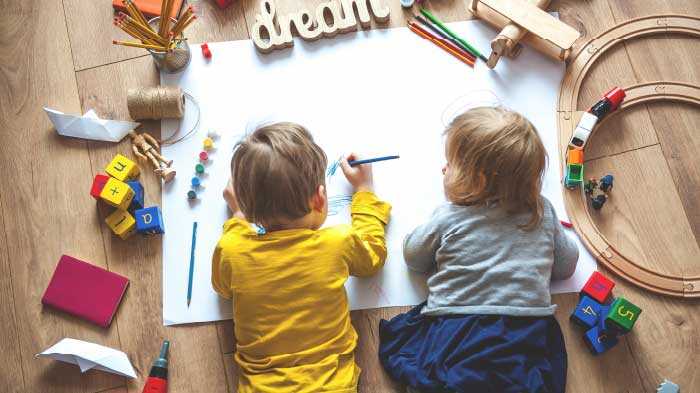
Requirements
A big paper and drawing and coloring materials are required.
How to Play
- Let the youngest begin! The game proceeds according to the date of birth.
- Get colored pencils and a big piece of paper.
- The youngest player will draw something. It can be a circle or a line, etc.
- Every other player will add something to this drawing. Let's see how it works out in the end!
Benefits
Supports the development of visual intelligence, fine motor skills and creativity.
Time spent at home with MentalUP is more precious than ever!
Support your child's development with brain booster daily workouts. MentalUP automatically prepares a special program for your child with more than a hundred and fifty games.
35. Treasure Hunt
Children always love to explore and finding hidden objects is very exciting for them. While some preparation is required to play, the fun it provides is what makes it one of the best games to play with family.
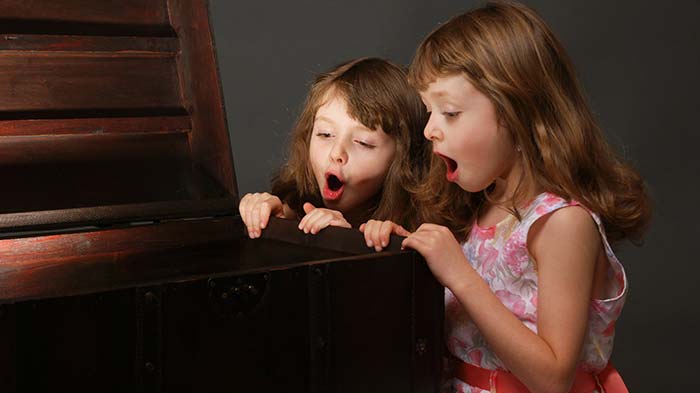
Requirements
You’ll need a reward for who completes the hunt and small pieces of paper to write the hints on.
How to Play
- Write clues on small folded pieces of paper.
- Plan each tip to take the kids to the next point.
- When the children reach the end, they find a reward.
Benefits
Treasure Hunt improves logic, attention and strategic thinking skills.
36. Categories
This classic game can be played with three or more people, and any adult or child who can read will enjoy this game so make sure to make room for it within your family games.

Requirements
You’ll need paper and a pencil for each player.
How to Play
- Everyone gets a piece of paper in front of them.
- There are headings on the papers that contain categories, such as names, cities, animals, and plants.
- One letter is specified, for example, the letter B.
- Everyone writes a name starting with the letter B in the relevant categories without showing their papers.
- Each correct word is worth 10 points. The score of those who have written the same words is divided between them and they are given 5 points for each word. Fields left blank are zero points.
- At the end of the game, the highest score wins.
Benefits
This game improves attention and memory skills.
37. Domino Run
Are you and your family ready to witness the beauty in movement? Yes? Let’s get started!
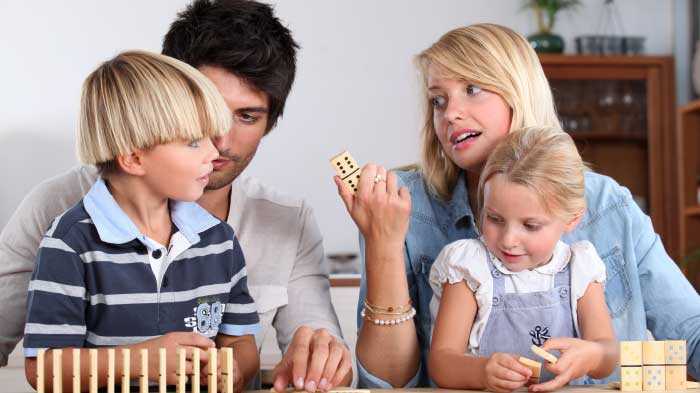
Requirements
Domino stones and a flat surface to place them on are required.
How to Play
- Arrange the dominoes to trigger each other.
- Use your creativity with the shape you form and improve the track and distancing.
- After patiently lining the dominoes, touch the trigger together and enjoy watching this amazing movement you've built.
Benefits
Children will need to adjust the distances correctly. For this, they need to learn to think thoroughly, which will help improve their strategic thinking and motor skills.
38. Monopoly
Monopoly is a classic real-estate trading game. This classic game is so popular that both board game and online versions are available, but, the board game version is better for your family game nights.

Requirements
You’ll need the monopoly board game.
How to Play
In the game, players roll two six-sided dice to move around the board, buy and trade property, and develop them with houses and hotels. The game has many house rules.
Benefits
Monopoly helps improve attention and strategic thinking skills.
39. Heads Up
Heads Up is one of the oldest known party games and it should be on your list of games to play with family.
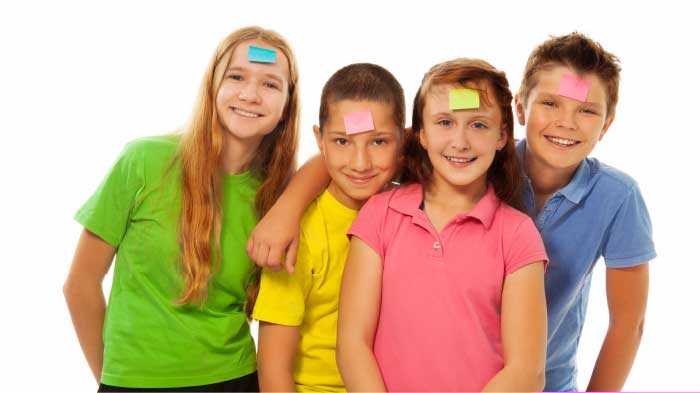
Requirements
A piece of paper or ready-to-use name cards are needed.
How to Play
- Have an unbiased person (they can be the judge of the game) write down names of movies, celebrities, plants, etc. on a piece of paper or use ready-to-use cards.
- Set a timer for two minutes and have the first player hold up a card to their forehead without looking at it.
- The other players should yell out clues for the first player (the one holding the card on their forehead).
- The first player will continue to guess who or what is on their card until correct or until they decide to pass.
- Repeat until the two minutes are complete.
Benefits
Heads Up boosts strategic thinking and memory skills.
40. Music Chair
Music Chair is a frequently chosen game at children’s birthday parties. Why not integrate it into your family game nights?
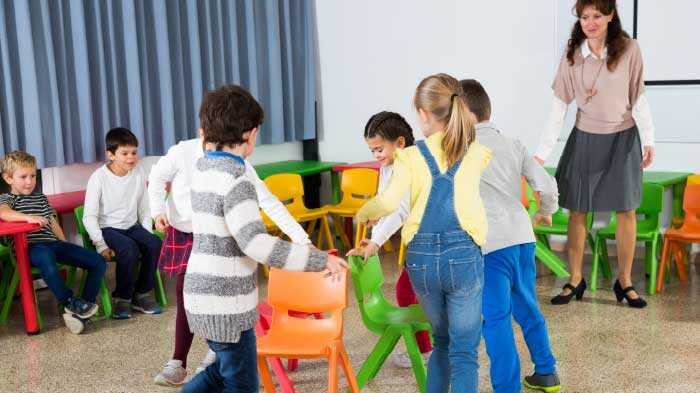
Requirements
You’ll need chairs and some music.
How to Play
- Chairs are lined up so that there is one less than the number of participants (if there are 5 players there must be 4 chairs).
- Music starts and children start dancing around the chairs.
- After the music stops, all the players must grab a seat.
- Whoever is still standing when the music stops is eliminated and takes one of the chairs with them.
- Who gets the last chair wins the game.
Benefits
Music Chair improves attention and listening skills.
41. Story Time
It’s Story Time! Here is another family activity that you can enjoy on your game nights!
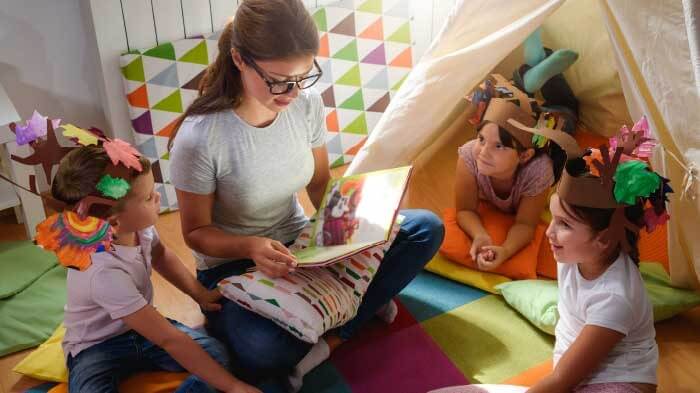
Requirements
All you’ll need is your imagination.
How to Play
- Start reading a story. It can be a new one or your children’s favorite.
- After the first page, ask the person on your right to continue the story with their own narrative.
- Keep passing the narrative of the story to the person to your right until each person has had a chance to continue the story at least three times. Each person should take a maximum of 1-2 minutes.
Benefits
This activity will support creativeness along with memory and attention skills.
TO SUM UP, WE HAVE INCLUDED:
- Games to play at home when bored
- Games to play with friends at home
- Games to play with family
- Brainteaser games from MentalUP
- Free Find the Difference, Maze, and Origami printables from our Pinterest page!
If you like the games we’ve mentioned and would like to recommend them to others, please feel free to share this article on social media. 😃


